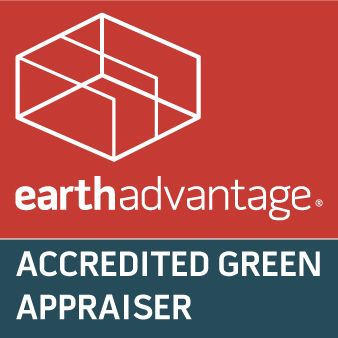 AGA - Accredited Green Appraiser (source: Earth Advantage) AGA - Accredited Green Appraiser (source: Earth Advantage)These days, we hear a lot about “green,” but what does it really mean? We visit green cafés, drive green cars, and join green political parties. We have access to green power, green design, and try to avoid greenwashing. With so much “green”, it is easy to lose sight of the term’s meaning. Let’s start with some definitions. Though there is not universal agreement on a definition of the term “green building,” is commonly referred to as the practice of creating structures and using processes that are environmentally responsible and resource-efficient throughout a building’s life-cycle from siting to design, construction, operation, maintenance, renovation and deconstruction. Green building achieves this through sustainable design principles to reduce the use of nonrenewable resources, encourage energy efficient construction and rehabilitation and the use of renewable energy resources, minimize the impact of development on the environment, and improve indoor air quality. This can lead to superior building performance and occupant comfort while reducing the environmental impacts of more traditional building practices. So where does all this green come from? The concept of sustainability. Sustainability is a process related to the development of all aspects of human life affecting sustenance. It attempts to resolve the conflict between competing goals, such as resource conservation and development. It seeks to integrate economic prosperity, environmental quality and social equity into the unified goal of the “triple bottom line. ” The term was coined by John Elkington, deemed the “dean of the corporate responsibility movement for three decades” by Business Week. Recently, these ideas have gained a lot of traction in the corporate world. In the real estate profession sustainable development means a pattern of resource use that meets current human needs while preserving the environment for the indefinite future. The Brundtland Commission (1987) coined what has become the most often-quoted definition of sustainable development as meeting “the needs of the present without compromising the ability of future generations to meet their own needs. “ |